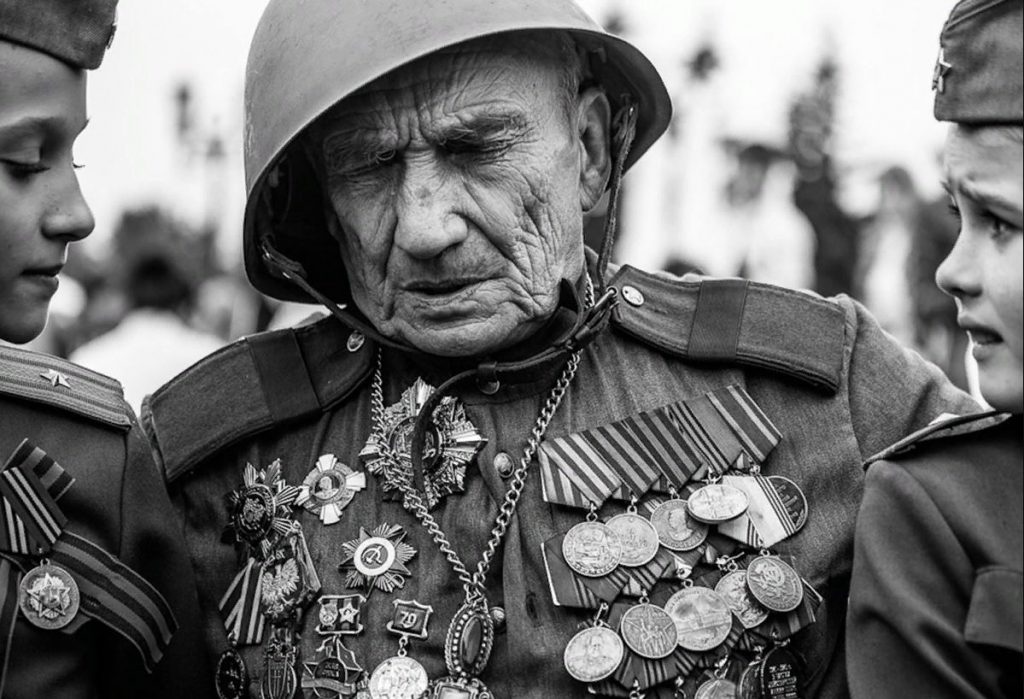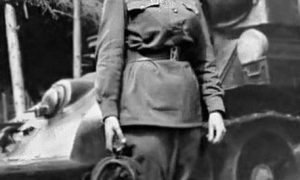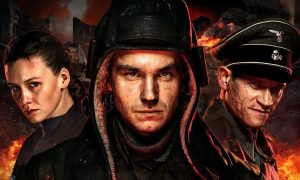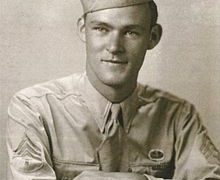
Soviet WW2 Veteran During Victory Day
MAY 9- Victory Day holiday
Victory Day – a holiday of the victory of the Red Army and the Soviet people over Nazi Germany in the Great Patriotic War 1941 – 1945. Сelebrated on May 9 each year.
On Victory Day, military parades and festive fireworks are held in many cities of Russia, an organized procession to the Tomb of the Unknown Soldier with a wreath-laying ceremony is held in Moscow, and festive processions and fireworks are held in large cities.
In the 2010s, processions with portraits of veterans – the ” Immortal Regiment”, became widespread.


The last days of the Second World War
Berlin offensive operation
In April 1945, the Red Army came closer to Berlin. By the beginning of the operation, Soviet troops numbered 149 rifle and 12 cavalry divisions, 13 tank and 7 mechanized corps, 15 separate tank and self-propelled brigades with a total number of more than 1,900,000 people. The 1st and 2nd armies of the Polish Army that took part in the operation numbered 10 infantry and 1 tank division, as well as 1 separate cavalry brigade, totaling 155,900 people. In total, more than 2 million soldiers and officers, 6,250 tanks and self-propelled guns, 41,600 guns and mortars, and 7,500 aircraft took part in the operation.
German troops took up defenses along the western banks of the Oder and Neisse rivers. On the approaches to Berlin and in the city itself, a grouping of troops was concentrated, which had 62 divisions (including 48 infantry, 4 tank and 10 motorized), 37 separate infantry regiments and about 100 separate infantry battalions, as well as a significant number of artillery units and divisions. This group numbered about a million people, 1,500 tanks, 10,400 guns and mortars, 3,300 combat aircraft. Berlin itself was also turned into the strongest fortified area and prepared for street fighting…. Three defensive rings were created around Berlin, more than 400 reinforced concrete long-term firing points with garrisons of up to a thousand people were built inside the city. The Berlin garrison itself numbered about 200,000 people.
During the Berlin operation, the Red Army irrevocably lost 78,291 people and 274,184 people were sanitary losses. That is, more than 15,000 soldiers and officers were out of action per day. Another 8892 people were lost by the Polish troops, of which 2825 people were irretrievably lost.
During the breakthrough of the German defense, including for battles in the city, tanks were widely used. In urban conditions, they could not use all their advantages and often became a convenient target for the anti-tank weapons of the Germans. This also led to high losses: in two weeks of fighting, the Red Army lost a third of the tanks and self-propelled guns participating in the Berlin operation, which amounted to 1997 units. Also, 2,108 guns and mortars and 917 combat aircraft were lost, but the main task of the operation was completely solved by the Soviet troops: they defeated 70 infantry, 12 tank and 11 motorized enemy divisions, captured about 480 thousand people, captured the capital of Germany and actually forced Germany to surrender.
Early in the morning of May 1, 1945, during the assault on the Reichstag, Sergeant Mikhail Yegorov and Junior Sergeant Meliton Kantaria, under the leadership of Junior Lieutenant A.P. Berest, hoisted the Victory Banner on the roof of the Reichstag building.


Signing the surrender
The message of the Soviet radio about the surrender of Germany, broadcast several times on May 9, 1945 from 2 hours 10 minutes in the morning. The text is read by Yuri Levitan
Wilhelm Keitel signs the German Unconditional Surrender Act
On May 1, 1945, at 3:50 am, the Chief of the General Staff of the Wehrmacht Ground Forces, General of the Infantry Krebs, was delivered to the command post of the 8th Guards Army, who announced that he was authorized to negotiate an armistice. However, Stalin ordered not to negotiate, except for unconditional surrender. An ultimatum was delivered to the German command : If by 10 o’clock consent is not given to unconditional surrender, the Soviet troops will deal a crushing blow. Having received no answer, the Soviet troops at 10:40 opened a hurricane of fire on the remnants of the defense in the center of Berlin. By 18 o’clock it became known that the demands for surrender had been rejected. After that, the last assault on the central part of the city, where the Imperial Chancellery was located, began. Throughout the night, from May 1 to May 2, battles for the chancellery continued. By morning, all the premises were occupied by Soviet soldiers.
On the night of May 2, at 1:50, the following message was received on the radio : “We are sending our parliamentarians to the Bismarck-Straße bridge. We cease hostilities. ” Later, the deputy minister of propaganda, Dr. Fritsche, asked the Soviet command for permission to speak on the radio with an appeal to the German troops of the Berlin garrison to end the resistance. By 15:00 the remnants of the Berlin garrison (more than 134 thousand people) surrendered.
On May 7 at 2:41 am ( CET ) in Reims, the act of unconditional surrender of Germany was signed, which entered into force on May 8 at 23:01 (May 9 at 00:01 Moscow time ). On behalf of the German High Command, the protocol was signed by General Jodl in the presence of General Walter Smith (on behalf of the Allied Expeditionary Forces), General Ivan Susloparov (on behalf of the Soviet High Command), and General of the French Army Francois Sevezwho signed the act as a witness. However, General Susloparov did not have permission from Moscow to sign the act of surrender of Germany, the Soviet Union insisted on signing another act.
On May 8 at 22:43 CET (23:43 Moscow time), Field Marshal of the Wehrmacht Wilhelm Keitel, as well as Colonel General of the Luftwaffe Stumpf and Admiral Kriegsmarine von Friedeburg, who had the appropriate authority from Dönitz, signed another act of surrender. which also entered into force on May 9 at 00:01 Moscow time.
Having accepted the surrender, the Soviet Union did not sign peace with Germany, that is, it remained at war with Germany. The war with Germany was ended de jure on January 25, 1955 by the adoption of the relevant decision by the Presidium of the Supreme Soviet of the USSR.

The last message of the German headquarters
On May 9, the German headquarters, which was no longer in Zossen, occupied by Soviet troops, published its last message:
German Surrender Act. Pravda, May 9, 1945
From the headquarters of Grand Admiral Dönitz
The Supreme Command of the Armed Forces reports:
In East Prussia, on Tuesday, German troops held the mouth of the Vistula and the western part of the Frische Nerung Spit until the last opportunity. The 7th Infantry Division was particularly distinguished. For her exemplary actions, the divisional commander, General von Saucken, was awarded the Knight’s Cross of the Iron Cross with oak leaves with swords and diamonds.
The main forces of our army group in Courland, for many months under the command of General Hilpert of the infantry, offered strong resistance to superior Soviet tank and infantry formations and bravely withstood six major battles, covered themselves with immortal glory. This army group rejected any premature surrender. The surviving planes delivered the wounded and the fathers of families to the West in exemplary order. The officers and staffs stayed with their troops. At midnight, in accordance with our terms, any military action and any troop movements were stopped.


The last pockets of resistance
By the time of the surrender, the Germans held a number of strongholds on the Atlantic coast of France ( Dunkirk, La Rochelle, Lorient ), the islands of Guernsey, Jersey and a number of others, the northern part of Germany, territory in Central Europe (part of southern Germany, Austria, Czechoslovakia), bridgeheads to the east Danzig on the Putziger-Nerung Spit (mouth of the Vistula) and in Courland (on the territory of the Latvian SSR ), the islands of the Greek archipelago, Denmark and most of Norway, part of the coastal territories of Holland… German troops in Central Europe, facing the Soviet front, did not obey the order of surrender and began to retreat westward, seeking to go over to the Allies.
On May 10, Soviet troops occupied a bridgehead on the Putziger-Nerung spit with the city of Hel, on May 11, Courland was taken under control. By May 14, the pursuit of retreating German troops in Central Europe ended. From 9 to 14 May, on all fronts, Soviet troops captured more than 1 million 230 thousand German soldiers and officers and 101 generals. On May 15, the Soviet Information Bureau announced the end of the reception of prisoners on all fronts.
History of the holiday
Decree of the Presidium of the Supreme Soviet of the USSR of May 8, 1945 “On declaring May 9 the holiday of victory”
The celebration of Victory Day on May 9 was introduced by the Decree of the Presidium of the Supreme Soviet of the USSR dated May 8, 1945, which ordered that this day be considered non-working.

Holiday in modern Russia
Moscow, parade on May 9, 2005
After the collapse of the USSR, military parades on May 9 on Red Square were not held until the anniversary year 1995. Then two parades were held in Moscow : on Red Square (on foot) and on Poklonnaya Gora (with the participation of troops and military equipment).
Since then, parades on Red Square have been held annually, but at first without military equipment. Since 2008, the parade was again held with the participation of military equipment, including military aviation.
Festive processions in honor of Victory Day are also held in all hero cities, military districts, in a number of large cities in Russia and the CIS countries. On this day, front-line soldiers traditionally meet, wreaths are laid at the Tomb of the Unknown Soldier, monuments of glory and military valor, festive fireworks are thundering.
In 2012, the Immortal Regiment campaign was held in Tomsk for the first time : the participants of the campaign follow the column and carry portraits of their ancestors who fought: parents, grandfathers and great-grandfathers. Since 2013, this tradition has spread throughout Russia and beyond, and from year to year it covers an increasing number of cities and countries. In 2015, the action gathered about 12 million people who took part in the march across Russia as a whole. In Moscow alone, the action gathered 500 thousand participants, including Russian President V. V. Putin.
Holiday in the countries of the former USSR
Victory Day in Donetsk, May 9, 2016
Victory Day is celebrated and is a non-working day in almost the entire territory of the CIS : in Azerbaijan, Armenia, Belarus, Kazakhstan, Kyrgyzstan, Moldova, Russia, Tajikistan, Uzbekistan, as well as in Georgia, partially recognized by Abkhazia and South Ossetia, unrecognized Donetsk People’s Republic, Luhansk People’s Republic, Nagorno-Karabakh Republic and Transnistria. Every year, with the support of Rossotrudnichestvo representations, large-scale Victory Day celebrations are held abroad. Every year, events dedicated to this day are held in different parts of the world.
Ukraine
Victory Day in Kiev on Khreshchatyk on May 9, 2010, tank T-34-85
From 1991 to 2015, Victory Day in Ukraine was officially celebrated as “Victory Day in the Great Patriotic War.” However, on April 9, 2015, the Verkhovna Rada of Ukraine adopted the law “On perpetuating the victory over Nazism in the Second World War of 1939-1945”, on May 9 the law was signed by the president and on May 21 came into force.
The Day of Remembrance and Reconciliation (8 May) and the Day of Victory over Nazism in World War II (9 May) are officially celebrated. Also, since 2015 in Ukraine, as part of the decommunization of the country, Soviet symbols, including the Victory Banner,, have been banned.
Despite the transformation of the holiday, Victory Day in its classic version continues to be celebrated unofficially. In particular, in 2017, processions of the Immortal Regiment were held in a number of regional centers of Ukraine, which ended in clashes between their participants and representatives of nationalist organizations.
In 2018, the procession within the framework of this action was accompanied by a fight in Kiev. In addition, the celebration of Victory Day in Ukraine was marked by arrests for the use of prohibited symbols (in total, 14 people were detained throughout the country).
The symbols of the Second World War
The main symbols of victory in the Second World War in the USSR were the Eternal Flame, memorials in hero cities, the Order of the Patriotic War, a Guards ribbon, a red carnation, a soldier’s cap with an asterisk, etc. CIS countries.


Holiday outside the countries of the former USSR
Flowers in front of the Monument to the Liberator Soldier in Berlin, May 9, 2010
Bulgarians in front of the monument to the Soviet army in Sofia, May 9, 2015
Israel. In Israel,also note the Victory Day (Eng.) Russian. In this country, May 9 became a public holiday thanks to the adoption in 2000 of the law on veterans of the Second World War and the blockade, this holiday was brought with them by repatriates from the USSR (before and after its collapse), who achieved the celebration of Victory Day at the state level… Festive parades are held with the participation of veterans of the Great Patriotic War, whose huge role in the defeat of Germany was not immediately, but was recognized by the State of Israel. In July 2017,the Israeli parliament officially passed the law on the celebration of Victory Day over Nazi Germany on May 9.
Germany. Germany officially celebrates 8 May as Liberation Day. Although this day is not a public holiday, various commemorative events are usually held throughout the country, especially on round anniversaries. In addition,commemorative events are held in Berlin on May 9inTreptower Park, wreaths are laid at the monument to the liberator soldier and folk festivals are organized, in which, first of all, the Russian-speaking population takes part.
Great Britain. Since 2007, Victory Day is celebrated annually in London (Great Britain). The focus is on the Northern Convoys, in which Great Britain played a major role. The celebration takes place on May 9 and consists of a ceremony aboard the cruiser Belfast(a museum docked on the south bank of the Thames), with the participation of British and Russian veterans, members of the British royal family, Russian and British diplomats. Since 2012, the celebration has been expanded with an open performance by the Royal Philharmonic Orchestra, with the obligatory inclusion in the program of the 1812 Year overture by PI Tchaikovsky, which is accompanied by cannon salvos from the cruiser.
Bulgaria. 1945 to 1989 The People’s Republic of Bulgaria celebrated Victory Day every year. After November 10, 1989, Victory Day was removed from the list of official public holidays in the country. Nevertheless, Bulgarians – members of Russophile organizations,left-wing political parties and people with developed Orthodox and Slavic identity- celebrate Victory Day every year. Since 2005, Bulgarians celebrating Victory Day have been wearing symbolic St. George ribbons.











